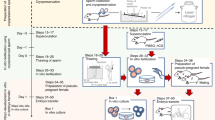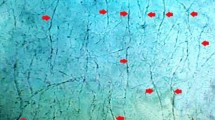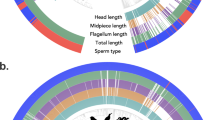Abstract
POLYSPERMY—the entry of more than one sperm into the vitellus at fertilization—is commonly regarded as a pathological process in mammals, with the implication that it leads to early degeneration of the embryo, and this opinion has been expressed by such authorities as Lams1, Wilson2, and Hartman3. In fact, very little is known concerning polyspermy in mammals, and data on its incidence or consequences are lacking. A study has therefore been made of polyspermy in the rat and rabbit, and a brief account of the results is presented in this communication. A full report is being prepared for publication elsewhere.
This is a preview of subscription content, access via your institution
Access options
Subscribe to this journal
Receive 51 print issues and online access
$199.00 per year
only $3.90 per issue
Buy this article
- Purchase on Springer Link
- Instant access to full article PDF
Prices may be subject to local taxes which are calculated during checkout
Similar content being viewed by others
References
Lams, H., Arch. Biol., 28, 229 (1913).
Wilson, E. B., “The Cell in Development and Heredity” (Macmillan Co., N.Y., 1925).
Hartman, C. G., in “Sex and Internal Secretions”, edit. by E. Allen (Williams and Wilkins Co., Baltimore, 1932).
Austin, C. R., and Braden, A. W. H. (in preparation).
Beatty, R. A., and Fischberg, M., J. Genetics, 50, 345 (1951).
Author information
Authors and Affiliations
Rights and permissions
About this article
Cite this article
AUSTIN, C., BRADEN, A. Polyspermy in Mammals. Nature 172, 82–83 (1953). https://doi.org/10.1038/172082b0
Issue Date:
DOI: https://doi.org/10.1038/172082b0
This article is cited by
Comments
By submitting a comment you agree to abide by our Terms and Community Guidelines. If you find something abusive or that does not comply with our terms or guidelines please flag it as inappropriate.



